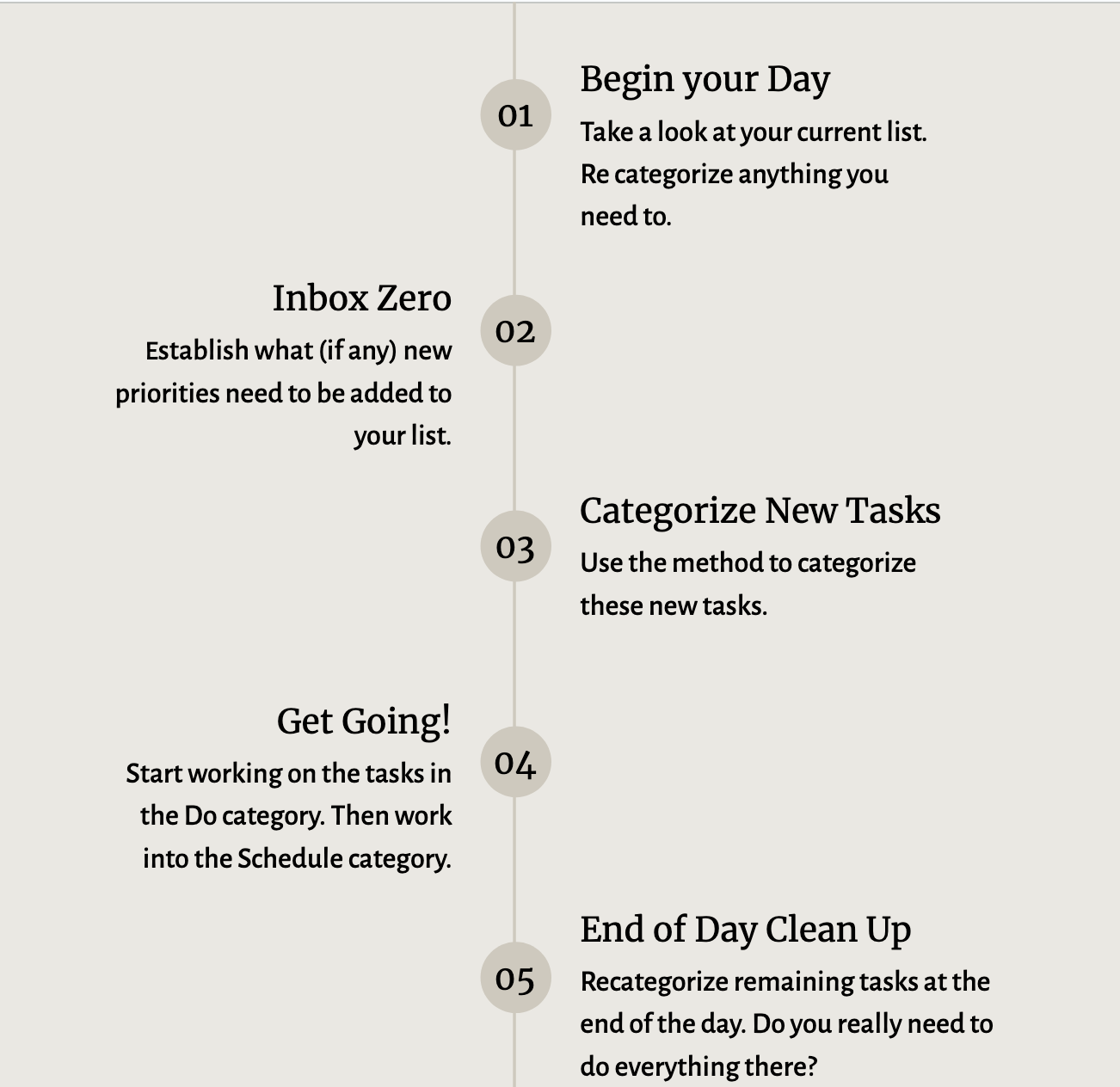The Eisenhower Matrix
What are your goals?
The first step to being able to prioritize anything is to understand what you want to accomplish.
Then the next question to ask is: Am I doing the best I can to make those a reality?
Once you have that in your mind, you can then ask yourself, am I doing the best things I can to make those goals a reality? Or are things getting in the way?
Perhaps you have issues, or questions, or a constant barrage of miscelania thrown your way every day that keeps you from making the progress you need.
Take a step back and retake your time. Enter, the Eisenhower Matrix.
What is it?
The Eisenhower Matrix, also referred to as the Urgent-Important Matrix, helps you decide on and prioritize tasks by urgency and importance

| 01 | Quadrant 1: Do | For tasks that are both urgent and important |
| 02 | Quadrant 2: Schedule | For tasks that are not urgent but are still important |
| 03 | Quadrant 3: Delegate | For tasks that are urgent but not important (to long term goals) |
| 04 | Quadrant 4: Delete | For tasks that weren’t urgent or important |
Quadrant one is the “do” quadrant, and this is where you’ll place any tasks that are both urgent and important. When you see a task on your to-do list that must be done now, has clear consequences, and affects your long-term goals, place it in this quadrant. There should be no question that these tasks are a high priority with real consequences.
Quadrant two is the “schedule” quadrant, and this is where you’ll place any tasks that are not urgent but are still important. Because these tasks affect your long-term goals but don’t need to be done right away, you can schedule these tasks for later. You can tackle these tasks after all of your Do quadrant tasks are completed for a given day.
Quadrant three is the “delegate” quadrant, and this is where you’ll place any tasks that are urgent but not important. These tasks must be completed now, but they don’t affect your long-term goals. These tasks likely don’t require your specific skill set to complete or do not have a high stakes deadline. You can look at delegating these tasks to other members of your team. Delegating tasks is one of the most efficient ways to manage your workload and give your team the opportunity to expand their own skill sets.
And finally, quadrant 4, delete. Once you’ve gone through your to-do list and added tasks to the first three quadrants, you may notice that a handful of tasks are left over. The tasks left over are tasks that weren’t urgent or important that day. These unimportant, non-urgent distractions are simply getting in the way of you accomplishing your actual goals. Place these remaining items on your to-do list in the fourth quadrant, which is the “delete” quadrant. At the end of the day, evaluate if you really need to do these items and if not, remove them from your priority list.
How do I use it?

Go Forth and Prosper
We have 4 quadrants, each with different work strategies.
Use to prioritize your day; You should try to maintain one list for both work and personal tasks. That way you will never be able to complain about not having done anything for your family or yourself at the end of the day.
Do not let others define your priorities. Plan in the morning, then work on your stuff.
I hope you are now one step closer to kicking goals and taking… out the trash on a regular basis.